Atlas Obscura’s Guide to the Longest Running Scientific Experiments
“Men love to wonder, and that is the seed of science.” - Ralph Waldo Emerson
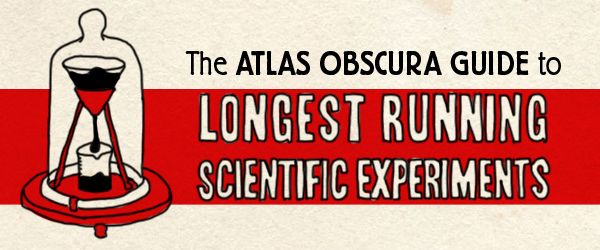
When, in 1596, cartographer Abraham Ortelius looked at a map he was working on, he noted something strange: The coasts of the continents looked as if they had once fit together. Ortelius noted in his journal that the “The vestiges of the rupture reveal themselves.” It would be over 300 years and a dogfight of science before Ortelius was proven right.
Despite the epic changes happening right in front of our eyes—mountains growing, species adapting, the expanding of our universe—these magnificent transformations often remain invisible to us, taking place on a timescale far outside of our ability to perceive them.
As a way of cheating this mortal coil, and peering into deep time, the scientists below have gone about establishing experiments that can outlive them; some are brilliant, some are ridiculous, and a few are just plain unethical. Here are fourteen science experiments that just won’t stop.
The Pitch Drop Experiment
ST. LUCIA, AUSTRALIA
(Photo: University of Queensland)
Professor Thomas Parnell was on a mission to prove that pitch, a hard substance solid enough to be shattered by a hammer, was actually just a very, very, viscous liquid that flowed at room temperature.
Begun in 1927, just getting ready to perform the experiment took years. The Professor heated a sample of pitch in a sealed funnel and for three years Parnell let the pitch cool and settle. In 1930 he cut the bottom off of the funnel, freeing the pitch to begin its mind-bogglingly slow escape.
Professor Parnell lived long enough to record only two drips fall, at an average rate of approximately once every 8.5 years. Parnell died in 1948 but the pitch experiment has kept on going without him. As of 2009, the pitch has dripped only eight times. Over 80 years after the experiment was begun, the ninth drop is beginning to form.
Curiously, because it only drips every 8 to 9 years, no one has ever actually been around to see a drop fall. A webcam was setup in 2000, but due to technical problems it missed the drip.
Beverly Clock
DUNEDIN, NEW ZEALAND
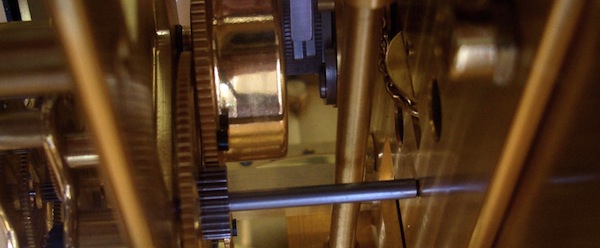 (Photo: jurvetson/CC BY 2.0)
(Photo: jurvetson/CC BY 2.0)
Invented by Arthur Beverly, this ingenious piece of timekeeping has yet to be wound since being put into “near perpetual motion” back in 1864.
Its sealed glass casing contains a box that flexes with atmospheric pressure. It flexes just enough to propel the clock’s weights, keeping it running, and creating one of the most sustainable, efficient timepieces the world has ever seen.
It takes only a six-degree Celsius temperature variation over a day to raise the one-pound weight an inch, powering the clock for yet another day. A commercial version of this type of clock is available under the name “Atmos Clock.”
Oxford Electric Bell
OXFORD, ENGLAND

(Photo: David Glover-Aoki/Public Domain)
In a scientist’s version of an alarm clock hell, the Oxford Electric Bell (or Clarendon Dry Pile) has been ringing quietly, but constantly, for over 170 years.
Made of two dry pile batteries of unknown composition, a brass bell hangs beneath each battery. Started in 1840 the metal ‘clapper’ swinging between them has produced a ring that has occurred on the order of 10 billion times. It is unknown when the batteries will finally run down.
A double-thick glass bell jar muffles the ringing sound, and keeping those around the bell from trying to hit snooze.
Dr. Beal’s Seed Viability Experiment
EAST LANSING, MICHIGAN

The 15th of 20 seed bottles that make up the world’s longest-running experiment “Some people say it looks like a whiskey flask,” says curator Dr. Frank Telewski. (Photo: Kurt Stepnitz/Michigan State University)
In the fall of 1879, Dr. William James Beal walked to a secret spot on Michigan State University’s campus and planted a strange crop: 20 narrow-necked glass bottles, each filled with a mixture of moist sand and seeds. Each vessel was “left uncorked and placed with the mouth slanting downward so that water could not accumulate about the seeds,” Beal wrote.
When he buried those bottles 137 years ago, Dr. Beal didn’t aim to start the As the World Turns of garden experiments. Hoping to figure out exactly how many years local species could hang on in neutral conditions, Beal filled 20 bottles with 50 seeds each of 23 different plant types. The bottles are unearthed one at a time, and the seeds are planted.
The last bottle is set to be unearthed in the year 2100—but if the project’s past curators are any indication, it might stay buried even longer than that. According to Beal’s original vision, the bottles were supposed to be dug up every five years, the last excavation marking a neat century. But in 1920, a decade after Beal retired, his replacement noticed that “the experiment seemed to be stabilizing,” so the periods were extended to 20 years between excavations.
The Morally Dubious: Of the Immortal and Infinite…
Henrietta Lacks

Henrietta Lacks. (Photo: Oregon State University/CC BY-SA 2.0)
Though Henrietta Lacks passed away from cervical cancer and was buried in 1950, traces of her can be found in nearly all biomedical research clinics throughout the world.
Prior to her death, cells from Lacks tumor were taken without her knowledge or permission, a common practice in the mid-Twentieth Century. She now has the dubious honor of originating the “HeLa immortal cell line,” after a doctor realized that, unlike other samples, her cells had the rare and remarkable ability to live even after having divided repeatedly. Essentially the cells were able to reproduce and grow infinitely, providing scientists with constant and reliable access to a human cell culture.
First used to test a polio vaccine, the cell line has since been used to study “cancer, AIDS, the effects of radiation and toxic substances, gene mapping, and many other scientific pursuits.” There are almost 11,000 patents involving HeLa cells and it is estimated that over the last 50 years scientists have grown some 20 tons of Henrietta Lacks cells.
However there is another sort of experiment taking places involving the HeLa’s immortal cell line, one of great concern to scientists.
Because of the cell line’s ability to survive and reproduce, the cells can be difficult to control and contain. HeLa has been found to be a persistent laboratory contaminate, mixing in with other cell lines and forcing researchers to declare their results invalid. As much as 10 to 20 percent of other research cell lines may be contaminated with HeLa cells. The impact of such widespread HeLa contamination is unclear. ![]()
Lenski’s “Long-term Evolution Experiment”
.jpg)
(Photo: Richard Lenski/Michigan State University)
The process of evolution happens at a varied pace, depending on circumstance, but seeing even a subtle change in a species within a single human lifetime can be very difficult. However, the incredibly fast lifespans and reproduction rates of bacteria can provide scientists with a window into a sort of “real-time evolution.”
Begun in 1988 researcher Richard Lenski has spent over two decades breeding and splicing E. coli in his “long-term evolution experiment.” His team culls 1% of the bacterial growth daily, transplanting them into a new flask to grow as a new branch of evolution. Lanksi is tracking the evolutionary changes in what began as 12 nearly identical cultures. In one branch of the evolutionary tree the E. Coli evolved to be able to grow in citric acid, something that none of the other E.Coli branches have managed to do.
Though the bacteria have produced hundreds of millions of mutations over the years (achieving quite possibly every point mutation that is possible for the E.Coli bacteria) only 10 to 20 of those mutations have been beneficial enough to achieve fixation in the E. Coli strains.
In February 2011, the experiment produced its 50,000th generation. Meanwhile Homo Sapiens are only on our 7,500 generation.
Simulated Worlds: Birds Shouldn’t Be Kept in Cages…
Biosphere Two
ORACLE, ARIZONA
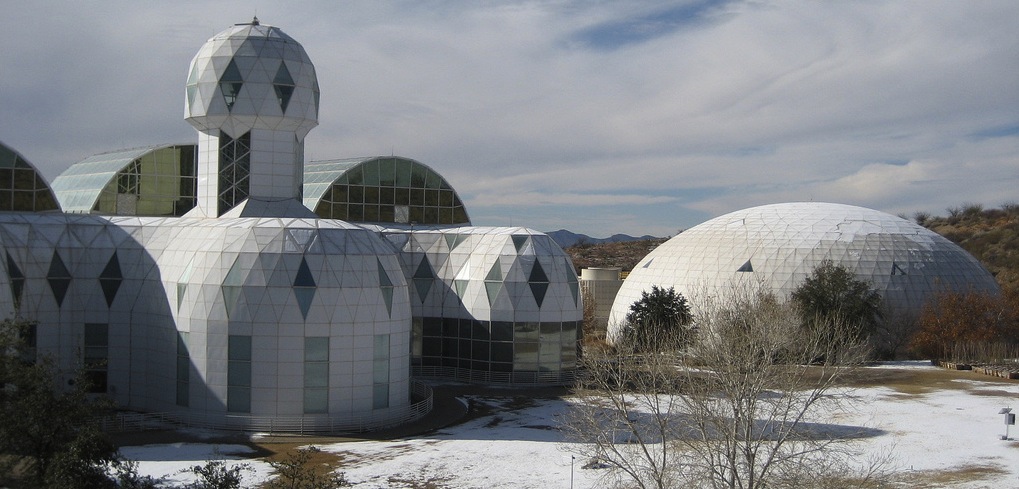
(Photo: a rancid amoeba/CC BY-SA 2.0)
For two years a team of scientists voluntarily confined themselves to the Biosphere Two domes, which were designed to simulate various environmental climates that could be recreated on Mars. This experiment was the longest of any of these confined biosphere types of experiments.
Though the oxygen levels in the domes dropped, the experiment was deemed a failure not because of ecological factors, but rather those rooted in human psychology. Even omitting Pauly Shore, at experiment’s end the biospherians became depressed, supremely annoyed with each other, and teetered on the edge of sanity. These psychological factors turn out to be a regular problem in these types of environments.
In a recent space station simulation, three-quarters of the way through an 8-month study, two “spacemen” in the simulation got into a fist fight, while a Canadian woman said that she was sexually harassed by a Russian colleague who had tried to kiss her. Out of these biosphere studies grew a new and unexpected field of psychological study, known as confined environment psychology.
Other places where these isolated environment issues are common are over-wintering in McMurdo Station on Antarctica, on Submarines, at the BIOS-3 and FMARS space simulations, and on MIR.
At the Intersection of Art and Science: Right Brain, Meet Left Brain…
Human Speechome Project and Boyhood

(Photo: IFC Productions)
Known as the “Human Speechome Project”, the study is an ongoing attempt to fully map the process of language acquisition in children. In a kind of real-world Truman Show, MIT professor Deb Roy set up a series of video cameras and microphones throughout his home to record every minute detail of his son’s language acquisition during the first three years of his life.
The equipment required to parse such a massive amount of raw data necessitated a petabyte (one million gigabytes) storage device in the homes basement; the ultimate collection of home movies.
Laboratory of Adult Development
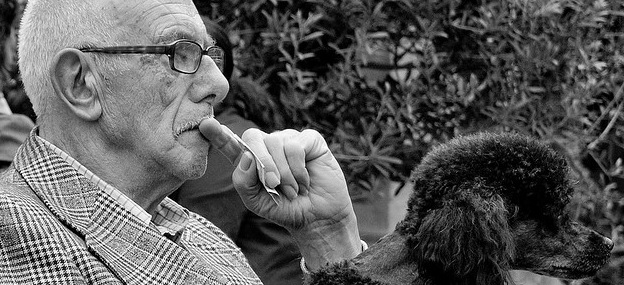
Longitudinal studies are the epic Hindu poems of science experimentation.
Traditionally longitudinal researchers observe human behavior from a statistical distance, recording developments as they occur over a very long period of time, such as many decades. The most epic longitudinal study of adult life ever conducted is run by the Harvard University’s Laboratory of Adult Development, in which the lives of a group of graduates from ’39-’44 (the Grant Study) are compared with those of inner-city Boston men (the Glueck Study) to gain insight into the dynamic aging process.
Every two years, both sets of men complete a comprehensive questionnaire that probes elements affecting their larger mental, social, and physical health to shed light on the predictors of “healthy aging,” including stress, happiness, and genetic predisposition. Now in its 72nd year the researchers continue o ooh for clues to the secrets of attaining the ever-elusive “good life.” Other long term Longitudinal studies include the National Survey of Health and Development and the Framingham Heart Study.
Director Michael Apted’s Up series conducts its own longitudinal study within the structure of multiple documentary films.
The installments began in 1964 with fourteen children at age seven, each representing a unique socio-economic position within British society. Henceforth, every seven years Apted has persuaded as many of the original participants as possible to appear on film, catching him up on the developments in their lives, from which he produces subsequent cinematic installments. The works are of astonishing poignancy, topping Channel 4’s list of 50 greatest documentaries ever created.
Burchardi Church Organ and “As Slow As Possible”
HALBERSTADT, GERMANY

John Cage church organ at St. Burchardi in Halberstadt. (Photo: Clemensfranz/CC BY-SA 4.0)
Though an art piece at its heart John Cage’s “Organ²/ASLSP (As SLow aS Possible)”, a piece of music written for the organ at the Sankt Burchardi Church in Halberstadt, Germany can also be seen as a social experiment dedicated to measuring the number of generations a single piece of art can be sustained.
Begun in 2001 and scheduled to have a duration of 639 years, the music pushes the boundaries of mechanical performance, human enjoyment, and tests whether sustained artistic vision can withstand the fickle nature of time and history.
On Watching Grass Grow and Glaciers Move

Sometimes, the longest running science experiments bear equal import to those above, while eliciting roughly the excitement equal to watching grass grow… literally.
And there are many more amazing long term earth and water experiments underway. The following research projects, which provide more than 300 years’ worth of information on the nuanced characteristics of Earth’s land and water.
- The Rothamsted plots in Great Britain are the perfect example of a “constant” in scientific experimentation. The fields have been used to study the longterm effects of inorganic fertilizers on various crops without interruption since 1843, making them the longest-running agricultural experiment in the world. Coming in a close second are the Morrow plots at the University of Illinois Urbana-Champaign, whose import remains great enough that the student body generally believes the college had three stories of the brand new library buried underground so as to not block the fields’ sunlight.
- Conversely, the Juneau Icefield Research Project has existed for half a century to measure the dramatic changes that can occur due to climate change, as evidenced by history and current climate developments.
- Along the Chesapeake Bay shore in Maryland, an ongoing experiment simulating atmospheric change has been conducted for 25 years. Results have shed light on Earth’s potential reaction to increased levels of carbon dioxide in the air, helping to predict sea level rise as well as the growth of invasive species.
Breeding and Domestication: Regarding the HMS Beagle and Actual Beagles
Domestication

Old Egyptian hieroglyphic painting showing an early instance of a domesticated animal, cow being milked. (Photo: Unknown Author/Public Domain)
Far surpassing all of the above experiments, however, is the sustained experiment humanity has been conducting known as domestication.
One scientifically motivated example of this is the domesticated silver fox experiment, begun in 1959 by Soviet scientist Dmitri Belyaev in an attempt to understand how wolves were breed into the domestic dogs. By selecting for temperament, this 51 year long study so successfully altered the nature of these wild foxes that they are now sold as house pets (sadly this is now what funds the study) and they behave much like domesticated dogs.
But one need only to look at one’s own neighborhood cats and dogs, or the (cow, pig, corn, wheat, rice etc.) on their plate to see the longest running, and likely most important scientific experiment in human history. The conclusion of this particular experiment, of course, remains to be seen.

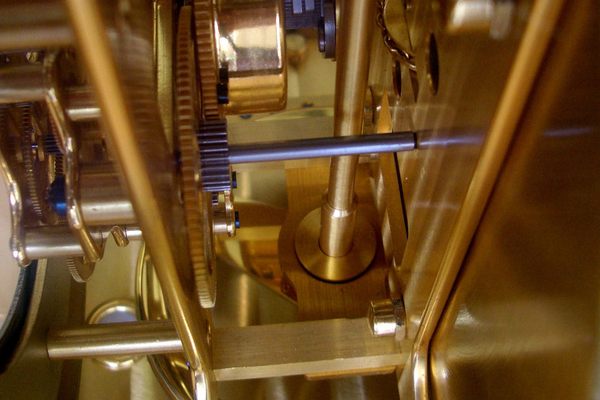
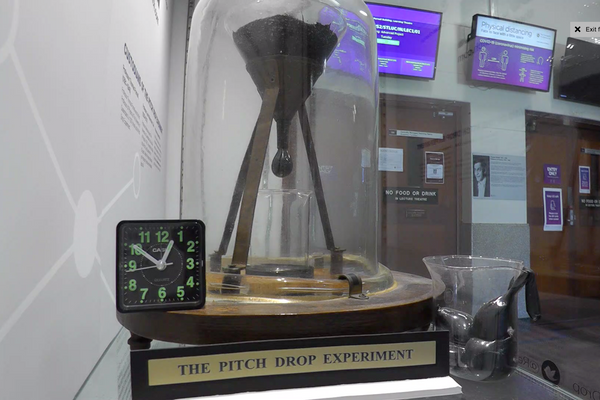



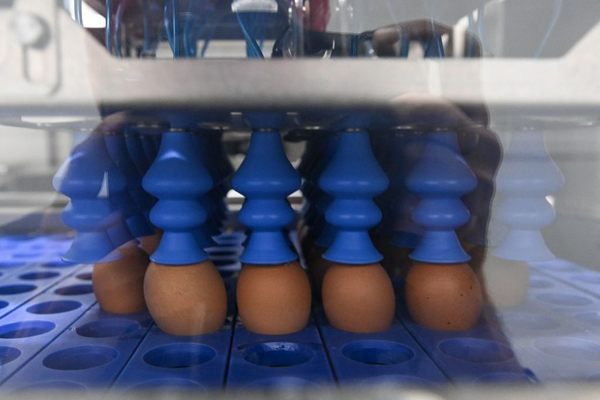
















Follow us on Twitter to get the latest on the world's hidden wonders.
Like us on Facebook to get the latest on the world's hidden wonders.
Follow us on Twitter Like us on Facebook